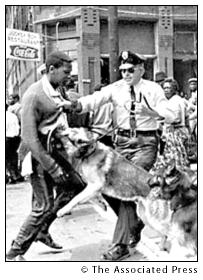 |
| Courtesy of Chicago Public Library |
Ask young people about the March on Washington and they will promptly cite the famous 1963 gathering in front of the Lincoln Memorial at which Martin Luther King Jr. delivered his famous “I Have a Dream” speech. Forgotten by many is the original March on Washington Movement led by A. Philip Randolph in 1941. However, had it not been for this earlier effort the 1963 March might have never happened.
In 1941 the growing conflagration in Europe fueled a government armament-spending spree that fired up the economy and wiped out the last vestiges of the Great Depression. But to African Americans the economic growth bitterly reminded them of the racial divide. Nearly one in two blacks in Illinois remained without work at the end of 1940. Picking up a copy of the Chicago Defender was discouraging. At the booming Los Angeles aircraft manufacturing plants, the paper’s correspondent reported, only one Negro could be found among the thousands given work. A plant manager in New York told the Defender there was no company policy against hiring Negroes. “He said that objections to working with Negroes undoubtedly would come from the men already in the plan and that the company did not wish to experiment at this present time because of the possibility of labor difficulties or the impairment of the moral of its workers.”
After the disheartening racism of the 1920s and bleak years of the 1930s, the patience of urban African Americans was coming to an end. In the fall of 1940 three black leaders met with President Franklin D. Roosevelt to seek an end to segregation in the military and defense industries. Roosevelt listened sympathetically but soon after the White House made known its intention to continue prohibiting the intermingling of colored and white soldiers. The announcement coming so quickly made it seem as if the black leaders had concurred in the pronouncement, especially when the press secretary made mention of the meeting.
The White House vainly tried to mollify the black leaders. But Randolph, the founding president of the Brotherhood of Sleeping Car Porters, would have none of it. As he rode the train into the South, he brooded over the impasse. By the time he reached Savannah, Georgia, Randolph had a plan. In recent years he had been deeply impressed by the non-violent approach being taken by Mahatma Gandhi in India against colonial British rule. If Gandhi could lead a march to seacoast in protest of the colonial tax on sale, African Americans could be marshaled into a mass action for jobs.
Proposing his idea first to small gatherings and then finally to the nation in January, Randolph called on African Americans to march on Washington as had Coxy’s Army of unemployed workers in 1894 and the Bonus Army of unpaid war veterans in 1932. Over six feet tall, elegant in gestures, with a baritone voice that one described as being as musical as an organ, Randolph rallied his people with an eloquence in speech and writing that belied his limited education. “The virtue and rightness of a cause,” he said, “are not alone the condition and cause of its progress and acceptance. Power and pressure are at the foundation of the march of social justice and reform.”
The idea struck terror in the Roosevelt administration. The President turned to his wife, who enjoyed considerable respect among African Americans. With the date of the march drawing closer an anxious Eleanor Roosevelt pleaded with Randolph to call off the march. If the arrival of thousands of blacks upon the nation’s capital, still a deeply segregated city whose hotels and restaurants barred Negroes, triggered an incident of any sort it would set the cause back, she wrote. “You know that I am deeply concerned about the rights of Negro people, but I think one must face situations as they are and not as one wishes them to be.”
To the President and his wife, as well as to allies such as New York City Mayor Fiorello LaGuardia, the planned protest march was unfathomable especially in time of war. But that was exactly Randolph’s hope. He believed the wartime atmosphere could be used to advance Civil Rights. The march, he promised, “would wake up and shock official Washington as it has never before been shocked” because “Negroes are supposed not have sufficient iron in their blood for this type of struggle. In common parlance, they are supposed to be just scared and unorganizable.”
He invited African Americans laborers and lawyers, doctors and nurses, mechanics and teachers, men and women, young and old to join in. “To get 10,000 Negroes assembled in one spot, under one banner with justice, democracy and work as their slogan would be the miracle of the century,” proclaimed an editorial in the Chicago Defender. “However, miracles do happen.”
Throughout the spring and into the summer of 1941, no one could escape the build up to for the summertime march. Each week the Defender reported on the growing plans as well as the mounting efforts of the administration to prevent its occurrence. Finally, with only a few days remaining before the march, a worried President capitulated. On June 25, Roosevelt issued Executive Order 8802 establishing the President’s Committee on Fair Employment (FEPC). Randolph called off the march. In its place, he converted the planned protest into the March on Washington Movement aimed at solidifying the gains and making sure the new commission lived up to its promise.
Ethel Payne became a believer and an important foot soldier in the movement. But for that part of the story as well as what she and Randolph said to each other after the 1963 march, you’ll have to wait for the book.






